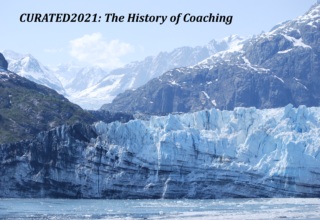
At each of these levels, changes emerge that could not have been predicted even from knowing everything about the elements in the level beneath. Thus, between the beginning and end of the 20′” century, there was a shift in how we understand who we are – from assumptions of individualism through relatedness to complexity. The fields that have participated in this shift and contributed to the resulting emergence of coaching include the influence of Eastern and New Age philosophy on Western philosophy; anthropology; sociology; and systems theory, including chaos and complexity.
However else we answer the question “who are we?” we are certainly physical beings in a material world. None of us escapes the challenges of accidents, disease, aging, and death. Human beings throughout the ages have wondered how to maintain and improve physical and mental functions in the face of these challenges. This also provides part of the foundation of coaching.
How can we be truly healthy? Classical medical practices in Greece and the Middle East were what we today would call holistic. They included body-mind health promotion and rehabilitation as well as prevention and treatment of disease. This section documents how reductionism limited that broad emphasis and then how the development of 20″‘ century medicine has begun to reestablish that breadth.
Descartes’ separation of physical from nonmaterial reality was a particular application of reductionism, called dualism, that allowed medical science to focus on practicing physical medicine without incurring the wrath of theologians. By the start of the 20’h century, secularization had made it less necessary for medical science to avoid the realm of the soul or psyche; however, mental health and health promotion had already been assigned to ancillary professionals and to public and governmental agencies. The separation of mind and body continued. Even strictly medical practices were divided among different professions, each with its focus on a part or parts of the whole human being, its own specialized language and assumptions, its encapsulated theory and research base, and its exclusive set of practices. Such divisions made it more difficult to resolve dualistic claims of environment versus heredity, nature versus nurture, external versus internal, and so forth.
Despite the limitations of these dualistic elements, medical discoveries in physiology and stress have applications to health in general and thus contribute to coaching. Understanding “homeostasis,” or the capacity of a living organism to maintain an internal state of equilibrium, such as to adjust to different external temperatures, reminds coaches to inquire about consequences of being out of balance. For example, poor nutrition, dehydration, lack of exercise, or inadequate sleep can be both consequence and cause of physical and mental illness. The harmful effects of stress have become more widely recognized since Hans Selye’s studies (1956, 1974). Of particular interest to organizational coaches, Richard Boyatzis and colleagues (Boyatzis, Smith, & Blaize, 2006) found that organizational leaders suffer stress particularly when they are seen by others, have to work in conditions of ambiguity, and must perform under pressure. They suggest that coaching others engages the compassion of leaders and actually mitigates the harmful effects of stress.
Download Article 1K Club

















